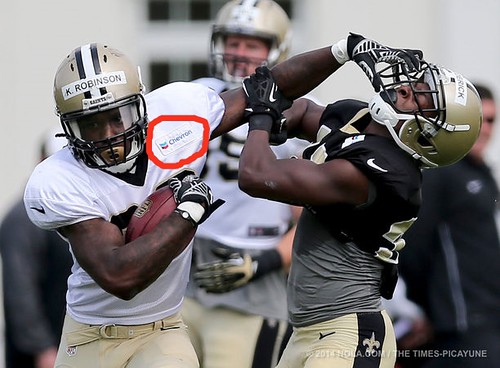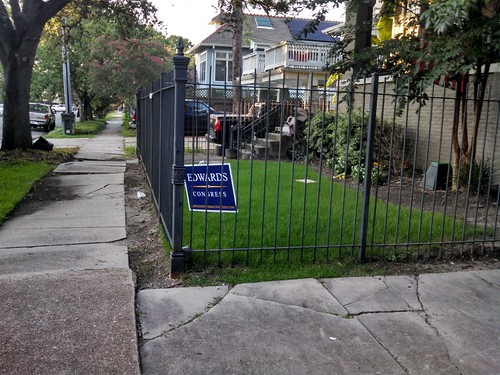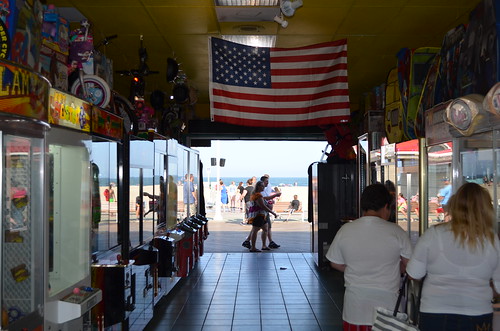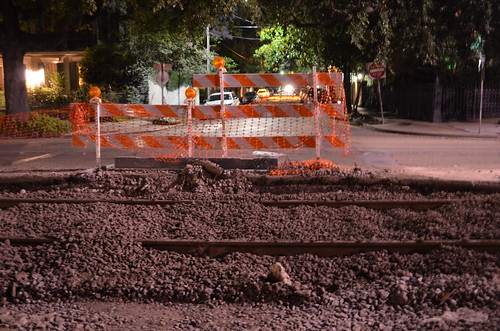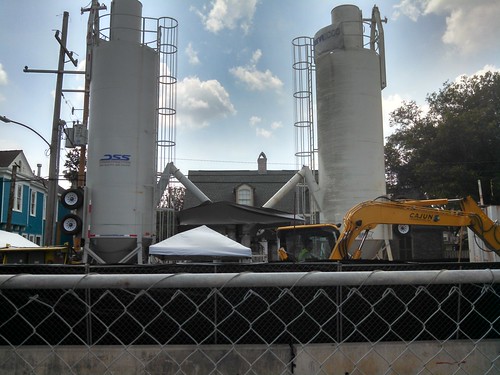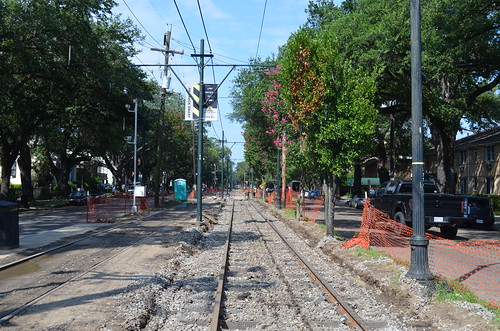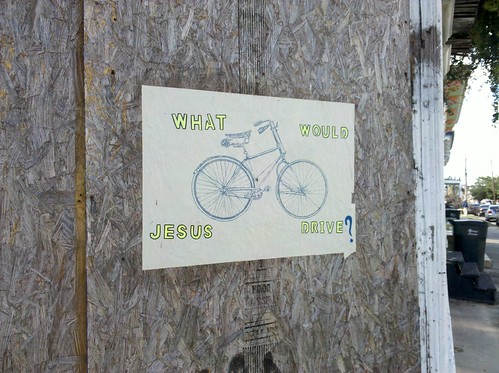
There are times when an ignored or oppressed faction has no other option but to get out in the street and demand to be taken seriously by a community.
This is not one of those times.
NEW ORLEANS (WGNO) - Angry bicyclists from around
the Bywater and Marigny came together and blocked the intersection where
a bicyclist was killed the day before.
The New Orleans bicycle nation is banding together, to say ‘enough is
enough,‘ and the fatal tragedy on Thursday afternoon could have been
prevented.
"New Orleans bicycle nation." Good grief.
There are a lot of people in New Orleans who use bicycles as one of their transportation options. Just like there are a lot of people who use hammers to hang some of their pictures or can-openers to get at some of their artichoke hearts. These people do not constitute a "nation."
I know because I am one of them. I've been riding a bike around New Orleans now for (literally.. I'm an old dude now) decades. In my experience, bicycling is the most convenient way to get most places in town when:
1) You're planning to travel 2-5 miles each way.
2) You don't have to carry a whole bunch of stuff or passengers.
3) You're fairly certain it's not going to rain like hell that day.
For other occasions I keep my twenty year old Toyota Tercel around as a backup. It works most of the time. But I've never considered either the bike of the car any sort of status indicator.
The deniznes of "bicycle nation" obviously think differently about that. Otherwise they wouldn't have thought it appropriate to wedge their personal identity politics into the scene of
a tragic and horrific traffic fatality.
"We're offered these two little white lines down the side of the road,
and that's it," said Adam Traugott, 26, a St. Claude resident who
organized the ride in response to Philip Geeck's death Thursday
afternoon (July 17).
"The culture here treats bicyclists as illegitimate," he continued.
Um... no. There's nothing wrong with, "the culture." A lot of people ride bikes in this city. If anything, "the culture" is very much in favor of it, perhaps even to a fault.
There are
bicycle advocacy groups,
bicycle social events,
bicycle valets. There is a city-sponsored
Bike To Work Day.
Lifestyle articles regularly highlight
the cycling trend in our
local publications. In 2011, the League of American Bicyclists
presented New Orleans with its "Bronze Bicycle Friendly Community" award.
Bicyclists are not a persecuted minority in New Orleans. They are not "illegitimate" in the eyes of "the culture." On the contrary, as a widely acknowledged favorite fashion accessory of the young, hip, creative class "New New Orleanian," the bicycle has never enjoyed a more elevated status in the eyes of the establishment.
So well entrenched is bicycle advocacy, in fact, that road resurfacing projects are required to plan for incorporating the needs of cyclists in their design. But it's worth noting that this political pull is a relatively recent phenomenon.
Here is a Lens article from 2011 about the city's effort to respond to the demands of cycling advocates. A decade ago, our award winning bike friendly community was in much worse shape.
In 2002, the city’s fatality rate won New Orleans the dubious
distinction of being the most dangerous biking city in the country’s
third most lethal state for biking. In fact, Orleans Parish accounted
for 49 percent of all bicycle crashes statewide, federal highway data
shows.
What has changed since then? Well for one thing there's a "media focus" on bicycling as fashion among the tastemaking class.
Despite a media focus on young, white and preternaturally hip
pedalers, the data show that the majority of the city’s cyclists are men
of color who don’t have cars and rely on bikes to get around. And the
injury rate tracks that: Of the injuries reported between 1996 and 2001,
44 were sustained by black males under 18, but only two in the same age
group were white males, the Regional Planning Commission states in its
New Orleans Metropolitan Bicycle and Pedestrian Plan, the most recent
study of biking fatalities in the city.
“You can’t attribute the popularity of bikes to the influx of new
people and the fact that people are all green,” Councilwoman Kristin
Gisleson Palmer. “It is the fact that we are a poor city. People cannot
afford to have cars and they get around on bikes.”
It's probable that those numbers have shifted a bit since that plan was published but Kristin Palmer's assertion is still on the mark. Most people who rely on bikes as their primary transportation in New Orleans do so out of necessity.
At the same time, though, the gentrification trend has brought with it a critical mass of "preternaturally hip" yuppies sufficient to generate political responsiveness. At least enough to get some bike lanes clumsily slapped down around town anyway. And that, in a sense, is the problem currently.
The accident last week didn't result from lack of attention to the demands of bicycling advocates. After all, it happened in a very recently installed bike lane. Contrary to the claims of the bicycle nationalists, "the culture" is going all out to accommodate them. It's just doing so poorly.
This article explains the stupidity of the Elysian Fields/St. Claude intersection pretty well.
As St. Claude approaches the intersection from the east, the bike
lane's solid striping becomes dashed, that's a signal to both cyclists
and motorists that they are entering a mixing zone, Bennett said. That's
normal. It's the area where cars wishing to turn right merge across the
bike lane in preparation to turn right.
It exists so drivers merge across the cycle lane rather than turning abruptly across it, Bennet said.
The St. Claude-Elysian Fields intersection, however, has an odd
feature. The right turn is configured as a slip lane -- the little
diagonal cut-through found on many busy streets. But the angle there
would be too sharp for large vehicles, so truck drivers are allowed to
make the right turn from the through lane, cutting across the bike lane.
Block signage on a St. Claude's lane that include the words "Trucks
OK" and a right arrow signal to truck drivers that they can make a right
turn, despite the lane for bicycles to travel through the
intersection.
"That is very dangerous," Bennett said. "I've never seen that design before.
"You never want to have a lane turning across a through lane of traffic," he said.
Click here if you need to see that illustrated.
They've created an intersection of state highways and major trucking routes with two turning lanes that plow straight across a bike lane in a way that makes it very difficult for bikers and drivers to see each other coming at all much less figure out who has the right of way. It's almost as if planners are trying to hurt people.
They're not, of course. It's just that this was the path of least resistance for a road design process involving agencies at federal, state, and local levels all trying to meet slightly different standards and satisfy the demands of various parties.. including truckers and bicyclists.
There are actually
smarter ways to integrate all of these elements. We're just not there yet. We can get there but I don't think we're likely to get there by airing grievances that have no basis in reality. Running out in the street and shouting at police can only spark an unproductive negative reaction. And then "the culture"
really will learn to see you as "illegitimate."
Also, I couldn't quite work these into this post but read them anyway. Varg was an eyewitness to the scene just after this accident occurred.
He wrote this about it. Also Jules Bentley was among the participants in the protest.
His account of that event is here.
